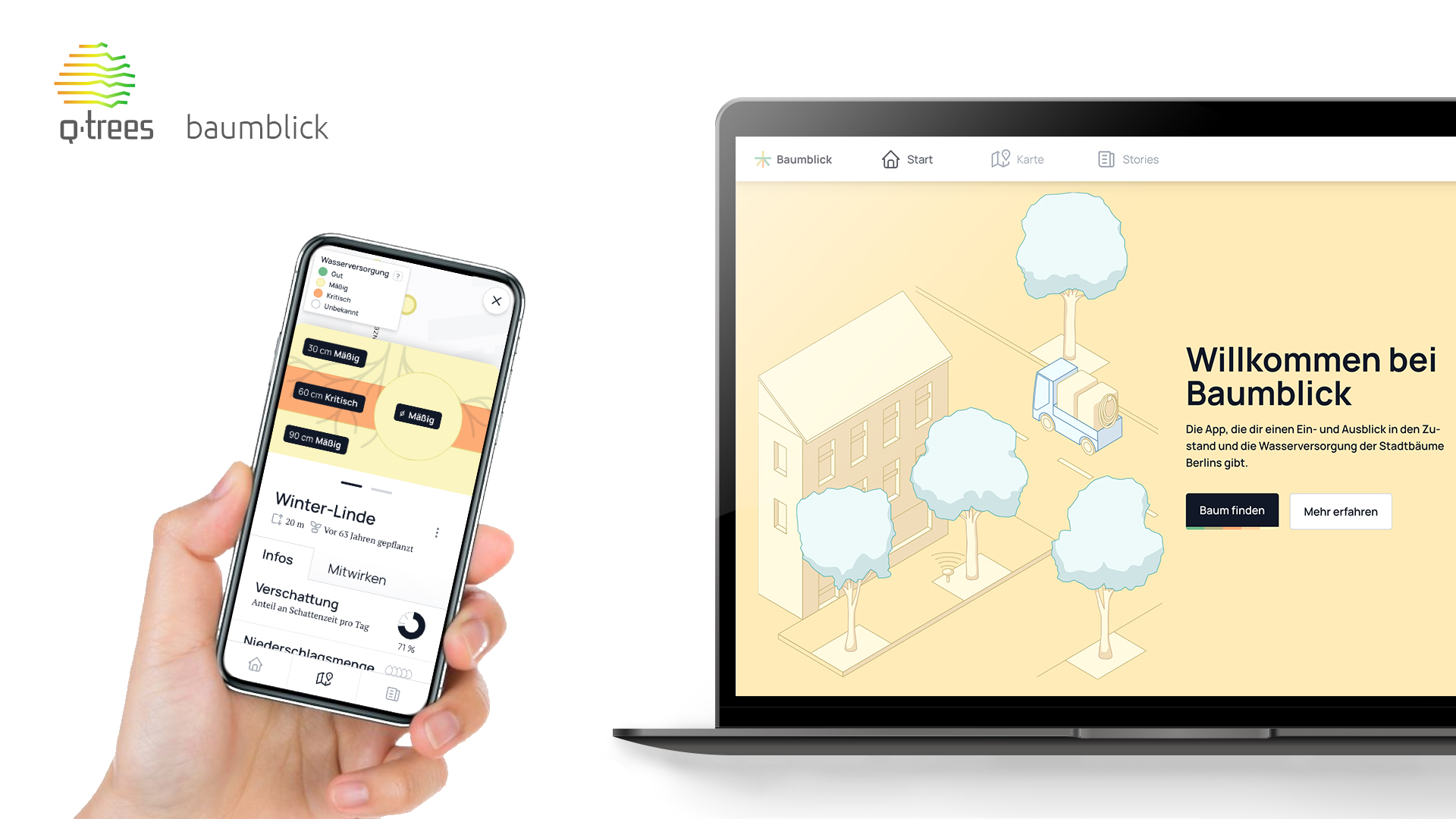City trees are increasingly suffering the consequences of climate change as well as the stressors of living in an urban environment. Their slow genetic adaptation means they are particularly affected by increasingly frequent periods of drought and increasing temperature extremes, damage from which can already be seen in Berlin. Could QTrees, a multi-disciplinary project harnessing Machine Learning, provide key insight into their maintenance?
Our city’s trees are beginning to suffer
Trees have been thriving on our planet for 300 million years. However, in the last fraction of their time on earth, they have faced unprecedented threats posed by rising temperatures and erratic precipitation patterns, and the situation is worsening.
Urban trees in particular have to deal with several other issues additionally, such as inadequately sized tree pits, general abuse and litter from the public, grit from the roads, and so on. Evidence of this can be seen in Berlin’s city trees, which already bear proof of the city’s recent droughts in 2018 and 2022. According to the BUND Baum Report issued in February 2021, Berlin loses a significant number of its urban trees every year. Between 2012 and 2019, the total street tree population decreased from 439,971 to 431,101 trees; a net loss of almost 9,000 trees. This means that every new tree planted in Berlin has to replace 2.4 felled for various reasons.
Could machine learning be a part of the solution?
Developed by the Technologiestiftung Berlin in association with AI agency Birds on Mars and in collaboration with the districts of Mitte and Neukölln, QTrees (Quantified Trees) launched in 2021 for an initial two-year test phase, aimed at sustainably counteracting tree death. Their AI-based forecasting system uses a wide range of both private and public data to identify urban trees that are acutely threatened by drought at an early stage.
At a recent conference held at the Heinrich-Böll-Stiftung in January 2024, Myrian Rigal, Senior Project Manager at Technologiestiftung Berlin, explained that the driving force behind QTrees was the pressing need to address the increasingly dire challenges faced by urban trees in the face of climate change and urban development.
The project sought to harness AI to mitigate these challenges, particularly in optimising the watering of city trees. Rigal explains that the approach was also staunchly interdisciplinary, drawing insights from experts across various fields to develop effective solutions. Such projects are not strictly new in theory; several other cities around the world have also developed digital methods for protecting urban environments. So, rather than reinventing the wheel, the team conducted extensive research and consultations to better understand the complexities of the problem.
A collaborative approach to a complex problem
The city of Berlin is already using sensor data such as from watermark sensors to better understand how their trees are doing. While this is a good start, it’s obviously not sustainable or cost-effective to put a sensor on every one of the city’s 800,000 trees. So, what about machine learning?
Building upon these existing efforts to monitor tree health, QTrees introduced an approach whereby diverse datasets including weather patterns, sensor readings and tree characteristics, as well as timely insights into tree hydration needs were integrated with machine learning. The data was then fed into their aptly named “Random Forest” regression model to generate accurate forecasts of water requirements.
The culmination of these efforts was the creation of two user-friendly applications: a dashboard tailored for greenery departments to optimise watering activities and “Baumblick“; an app designed to engage and inform the public about tree health. The app not only serves as a platform to spotlight urban tree care and the importance of watering trees but also encourages active participation, fostering community engagement and enhancing the AI model’s effectiveness.
Rigal told the Heinrich-Böll-Stiftung that the key takeaways learned over the two years of the project’s operation were that, firstly, AI is “not a silver bullet”. It alone, Rigal explains, must be used in an interdisciplinary way, in association with experts and those with proven experience in the field. Secondly, and in extension of this point, “the prediction is only as good as the data itself”. She explains that while they saw sensor data responding well to rain levels, sensors did occasionally fail and data was incoherent at times. When the data is wrong or incomplete, the AI output will be wrong too. For this and several other reasons, expert involvement is essential.
Lastly, and a common complaint of innovative projects we write about on RESET, key decision-maker involvement and support are essential in order for these solutions to be integrated. Without this, progress is simply not scalable. Those involved in the project, for example, wanted QTrees to be rolled out Berlin-wide, not just in Mitte and Neukölln districts, but “ultimately that decision is in the hands of the public administrators”. With this in mind, as of 2024, QTrees is “currently identifying whether it is worthwhile to apply for follow-up funding”.
The post Pilot Project QTrees Harnesses AI to Protect Berlin’s Urban Greenery Amid Climate Change appeared first on Digital for Good | RESET.ORG.


